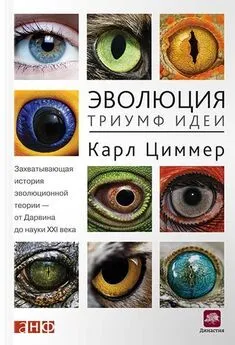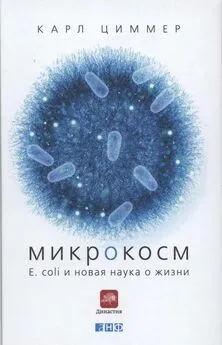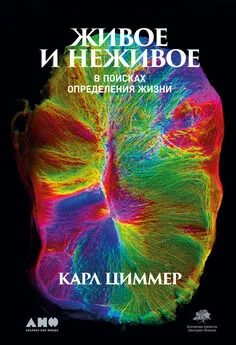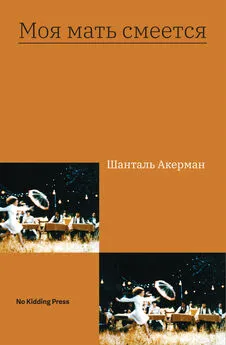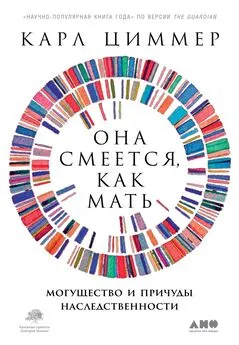Карл Циммер - Она смеется, как мать [Могущество и причуды наследственности] [litres]
- Название:Она смеется, как мать [Могущество и причуды наследственности] [litres]
- Автор:
- Жанр:
- Издательство:Литагент Альпина
- Год:2020
- Город:Москва
- ISBN:978-5-0013-9210-1
- Рейтинг:
- Избранное:Добавить в избранное
-
Отзывы:
-
Ваша оценка:
Карл Циммер - Она смеется, как мать [Могущество и причуды наследственности] [litres] краткое содержание
И культура, и традиции, география и экономика, технологии и то, в каком состоянии мы оставим планету, наконец. По мере развития науки появляется все больше способов вмешиваться в разные формы наследственности, что открывает потрясающие возможности, но одновременно ставит новые проблемы.
Технология CRISPR-Cas9, используемая для редактирования генома, генный драйв и создание яйцеклетки и сперматозоида из клеток кожи – список открытий растет с каждым днем, давая достаточно поводов для оптимизма… или беспокойства. В любом случае прежним мир уже не будет.
Карл Циммер знаменит своим умением рассказывать понятно. В этой важнейшей книге, которая основана на самых последних исследованиях и научных прорывах, автор снова доказал свое звание одного из лучших научных журналистов в мире.
Она смеется, как мать [Могущество и причуды наследственности] [litres] - читать онлайн бесплатно ознакомительный отрывок
Интервал:
Закладка:
Lawrence, Cera R. 2008. “Preformationism in the Enlightenment.” Embryo Project Encyclopedia. Senior editor Erica O’Neil. https://embryo.asu.edu/pages/preformationism-enlightenment(accessed August 24, 2017).
Laxova, Renata. 1998. “Lionel Sharpies Penrose, 1898–1972: A Personal Memoir in Celebration of the Centenary of His Birth.” Genetics 150: 1333–40.
Lazaridis, Iosif, Dani Nadel, Gary Rollefson, Deborah C. Merrett, Nadin Rohland, Swapan Mallick, Daniel Fernandes, and others. 2016. “Genomic Insights into the Origin of Farming in the Ancient Near East.” Nature 536, no. 7617. doi: 10.1038/naturel9310.
________, Nick Patterson, Alissa Mittnik, Gabriel Renaud, Swapan Mallick, Karola Kirsanow, Peter H. Sudmant, and others. 2014. “Ancient Human Genomes Suggest Three Ancestral Populations for Present-Day Europeans.” Nature 513: 409–13.
Lazebnik, Y., and G. E. Parris. 2015. “Comment On: ‘Guidelines for the Use of Cell Lines in Biomedical Research’: Human-to-Human Cancer Transmission as a Laboratory Safety Concern.” British Journal of Cancer 112: 1976–77.
Lederer, Susan E. 2013. “Bloodlines: Blood Types, Identity, and Association in Twentieth-Century America.” In Blood Will Out: Essays on Liquid Transfers and Flows. Edited by Janet Carsten. London: John Wiley and Sons.
Ledford, Heidi. 2016. “CRISPR: Gene Editing Is Just the Beginning.” Nature 531: 156.
Lein, Ed, and Mike Hawrylycz. 2014. “The Genetic Geography of the Brain.” Scientific American 310: 70–77.
Lenormand, Thomas, Jan Engelstädter, Susan E. Johnston, Erik Wijnker, and Christoph R. Haag. 2016. “Evolutionary Mysteries in Meiosis.” bioRxiv. doi: 10.1101/050831.
Leontiou, Chrysanthia A., Maria Gueorguiev, Jacqueline van der Spuy, Richard Quinton, Francesca Lolli, Sevda Hassan, Harvinder S. Chahal, and others. 2008. “The Role of the Aryl Hydrocarbon Receptor-Interacting Protein Gene in Familial and Sporadic Pituitary Adenomas.” Journal of Clinical Endocrinology and Metabolism 93: 2390–2401.
Leroi, Armand Marie. 2003. Mutants: On Genetic Variety and the Human Body. New York: Viking Penguin.
________. 2014. The Lagoon: How Aristotle Invented Science. New York: Viking Penguin.
Lester, Camilla H., Niels Frimodt-Møller, Thomas Lund Sorensen, Dominique L. Monnet, and Anette M. Hammerum. 2006. “In Vivo Transfer of the vanA Resistance Gene from an Enterococcus faecium Isolate of Animal Origin to an E.faecium Isolate of Human Origin in the Intestines of Human Volunteers.” Antimicrobial Agents and Chemotherapy 50: 596–99.
Lewis, Ronald L. 1974. “Slavery on Chesapeake Iron Plantations Before the American Revolution.” Journal of Negro History 59: 242–54.
Lewis, Simon L., and Mark A. Maslin. 2015. “Defining the Anthropocene.” Nature 519: 171–80.
Lewontin, Richard C. 1970. “Race and Intelligence.” Bulletin of the Atomic Scientists 26: 2–8.
________. 1972. “The Apportionment of Human Diversity.” Evolutionary Biology 6: 381–98.
Li, Mu, and Creswell J. Eastman. 2012. “The Changing Epidemiology of Iodine Deficiency.” Nature Reviews Endocrinology 8: 434–40.
Liang, Puping, Yanwen Xu, Xiya Zhang, Chenhui Ding, Rui Huang, Zhen Zhang, and others. 2015. “CRISPR/Cas9Mediated Gene Editing in Human Tripronuclear Zygotes.” Protein & Cell 6: 363–72.
Librado, Pablo, Antoine Fages, Charleen Gaunitz, Michela Leonardi, Stefanie Wagner, Naveed Khan, Kristian Hanghøj, and others. 2016. “The Evolutionary Origin and Genetic Makeup of Domestic Horses.” Genetics 204: 423–34.
________, Cristina Gamba, Charleen Gaunitz, Clio Der Sarkissian, Mélanie Pruvost, Anders Albrechtsen, Antoine Fages, Naveed Khan, Mikkel Schubert, and Vidhya Jagannathan.2017. “Ancient Genomic Changes Associated with Domestication of the Horse.” Science 356: 442–45.
Lifton, Robert Jay. 2000. The Nazi Doctors: Medical Killing and the Psychology of Genocide. New York: Basic Books.
Ligon, Azra H., Steven D. P. Moore, Melissa A. Parisi, Matthew E. Mealiffe, David J. Harris, Heather L. Ferguson, Bradley J. Quade, and Cynthia C. Morton. 2005. “Constitutional Rearrangement of the Architectural Factor HMGA2: A Novel Human Phenotype including Overgrowth and Lipomas.” American Journal of Human Genetics 76: 340–48.
Lim, Jana P., and Anne Brunet. 2013. “Bridging the Transgenerational Gap with Epigenetic Memory.” Trends in Genetics 29: 176–86.
Lindholm, Anna K., Kelly A. Dyer, Renée C. Firman, Lila Fishman, Wolfgang Forstmeier, Luke Holman, Hanna Johannesson, and others. 2016. “The Ecology and Evolutionary Dynamics of Meiotic Drive.” Trends in Ecology & Evolution 31, no. 4. doi: 10.1016/j.tree.2016.02.001.
Lindhurst, Marjorie J., Julie C. Sapp, Jamie K. Teer, Jennifer J. Johnston, Erin M. Finn, Kathryn Peters, Joyce Turner, Jennifer L. Cannons, David Bick, and Laurel Blakemore. 2011. “A Mosaic Activating Mutation in AKT1 Associated with the Proteus Syndrome.” New England Journal of Medicine 365: 611–19.
________, Miranda R. Yourick, Yi Yu, Ronald E. Savage, Dora Ferrari, and Leslie G. Biesecker. 2015. “Repression of АКТ Signaling by ARQ 092 in Cells and Tissues from Patients with Proteus Syndrome.” Scientific Reports 5. doi: 10.1038/srepl7162.
Linnarsson, Sten. 2015. “A Tree of the Human Brain.” Science 350: 37.
Lippman, Walter. 1922. “The Mental Age of Americans.” New Republic, October 25.
Liu, Yang, Liangliang Zhang, Shuhua Xu, Landian Hu, Laurence D. Hurst, and Xiangyin Kong. 2013. “Identification of Two Maternal Transmission Ratio Distortion Loci in Pedigrees of the Framingham Heart Study.” Scientific Reports 3. doi: 10.1038/srep02147.
Locey, Kenneth J., and Jay T. Lennon. 2016. “Scaling Laws Predict Global Microbial Diversity.” Proceedings of the National Academy of Sciences of the United States of America 113: 5970–75.
Lodato, Michael A., Mollie B. Woodworth, Semin Lee, Gilad D. Evrony, Bhaven K. Mehta, Amir Karger, Soohyun Lee, and others. 2015. “Somatic Mutation in Single Human Neurons Tracks Developmental and Transcriptional History.” Science 350: 94–98.
Loike, John D., and Ruth L. Fischbach. 2013. “New Ethical Horizons in Gestational Surrogacy.” Journal of Fertilization: In Vitro-IVF-Worldwide 1: 2. doi: 10.4172/jfiv.l000109.
Long, Edward. 1774. The History of Jamaica: Or, General Survey of the Ancient and Modern State of That Island. London: T. Lowndes.
López-Beltrán, Carlos. 1995. “Les maladies héréditaires: 18th Century Disputes in France.” Revue d’histoire des sciences 48: 307–50.
________. 2004. “In the Cradle of Heredity: French Physicians and L’Hérédité Naturelle in the Early 19th Century.” Journal of the History of Biology 37: 39–72.
Louvish, Simon. 2010. Chaplin: The Tramps Odyssey. London: Faber.
Lucotte, G., and F. Diéterlen. 2014. “Frequencies of M34, the Ultimate Genetic Marker of the Terminal Differenciation of Napoléon the First’s Y-Chromosome Haplogroup Elblblcl in Europe, Northern Africa and the Near East.” International Journal of Anthropology 29: 27–41.
Lucotte, Gérard. 2011. “Haplotype of the Y Chromosome of Napoléon the First.” Journal of Molecular Biology Research 1: 12–19.
Lupski, James R. 2013. “Genome Mosaicism – One Human, Multiple Genomes.” Science 341: 358–59.
Lycett, Stephen J., Kerstin Schillinger, Metin I. Eren, Noreen von Cramon-Taubadel, and Alex Mesoudi. 2016. “Factors Affecting Acheulean Handaxe Variation: Experimental Insights, Microevolutionary Processes, and Macroevolutionary Outcomes.” Quaternary International 411B: 386–401.
Lynch, Michael. 2016. “Mutation and Human Exceptionalism: Our Future Genetic Load.” Genetics 202: 869–75.
Lyon, Mary F. 1961. Gene Action in the X–Chromosome of the Mouse (Mus musculus L.). Nature 190: 372–73.
Lyons, Derek E., Andrew G. Young, and Frank C. Keil. 2007. “The Hidden Structure of Overimitation,” Proceedings of the National Academy of Sciences of the United States of America 104: 19751–56.
Ma, Hong, Nuria Marti-Gutierrez, Sang-Wook Park, Jun Wu, Yeonmi Lee, Keiichiro Suzuki, Amy Koski, and others. 2017. “Correction of a Pathogenic Gene Mutation in Human Embryos.” Nature 548: 413–19.
Macdonald, David A., and Nancy N. McAdams. 2001. The Woolverton Family, 1693–1850 and Beyond: Woolverton and Wolverton Descendants of Charles Woolverton, New Jersey Immigrant. Albuquerque: Penobscot Press.
Mackintosh, N. J. 1995. Cyril Burt: Fraud or Framed? Oxford: Oxford University Press.
Maddox, Brenda. 2002. Rosalind Franklin: The Dark Lady of DNA. New York: Harper Collins.
Madrigal, Alexis. 2012. “The Perfect Milk Machine: How Big Data Transformed the Dairy Industry.” Atlantic, May 1. http://www.theatlantic.com/technology/archive/2012/05/the-perfect-milk-machine-how-big-data-transformed-the-dairy-industry/256423/(accessed July 30, 2017).
Maher, Brendan. 2008. “Personal Genomes: The Case of the Missing Heritability.” Nature 456: 18–21.
Mahmood, Uzma, and Keelin O’Donoghue. 2014. “Microchimeric Fetal Cells Play a Role in Maternal Wound Healing After Pregnancy.” Chimerism 5: 40–52.
Maienschein, Jane. 1978. “Cell Lineage, Ancestral Reminiscence, and the Biogenetic Law.” Journal of the History of Biology 11: 129–58.
Malan, Valerie, R. Gesny, N. Morichon-Delvallez, M. C. Aubry, A. Benachi, D. Sanlaville, C. Turleau, J. P. Bonnefont, C. Fekete-Nihoul, and M. Vekemans. 2007. “Prenatal Diagnosis and Normal Outcome of a 46, XX/46, XY Chimera: A Case Report.” Human Reproduction 22: 1037–41.
Mandel, Roi. 2014. “Auschwitz Prisoner No. A7733 Finally Finds His Family.” Ynet News, September 11. https://www.ynetnews.com/articles/0,7340,L-4589762,00.html(accessed September 11, 2017).
Maples, Brian K., Simon Gravel, Eimcar E. Kenny, and Carlos D. Bustamante. 2013. “RFMix: A Discriminative Modeling Approach for Rapid and Robust Local-Ancestry Inference.” American Journal of Human Genetics 93: 278–88.
Marchione, Marilynn. 2016. “Three-Parent Kids Grew Up OK.” NBC News, October 27. http://www.nbcnews.com/health/health-news/three-parent-kids-grew-ok-n674126(accessed August 5, 2017).
Marciniak, Stephanie, and George H. Perry. 2017. “Harnessing Ancient Genomes to Study the History of Human Adaptation.” Nature Reviews Genetics 18: 659–74.
Marcotrigiano, Michael. 1997. “Chimeras and Variegation: Patterns of Deceit.” HortScience 32: 773–84.
Maron, Barry J., John R. Lesser, Nelson B. Schiller, Kevin M. Harris, Colleen Brown, and Heidi L. Rehm. 2009. “Implications of Hypertrophic Cardiomyopathy Transmitted bv Sperm Donation.” JAMA 302: 1681–84.
Marouli, Eirini, Mariaelisa Graff, Carolina Medina-Gomez, Ken Sin Lo, Andrew R. Wood, Troels R. Kjaer, Rebecca S. Fine, and others. 2017. “Rare and Low-Frequency Coding Variants Alter Human Adult Height.” Nature 542: 186–90.
Marre, Julia, Edward C. Traver, and Antony M. Jose. 2016. “Extracellular RNA Is Transported from One Generation to the Next in Caenorhabditis elegans.” Proceedings of the National Academy of Sciences of the United States of America 113: 12496–501.
Читать дальшеИнтервал:
Закладка:
![Обложка книги Карл Циммер - Она смеется, как мать [Могущество и причуды наследственности] [litres]](/books/1075049/karl-cimmer-ona-smeetsya-kak-mat-moguchestvo-i-pr.webp)

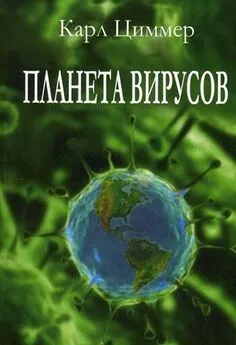
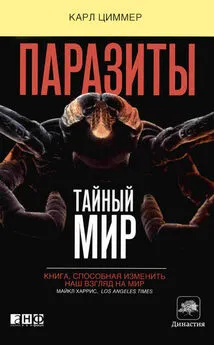

![Карл Циммер - Паразит – царь природы [Тайный мир самых опасных существ на Земле] [litres]](/books/1067054/karl-cimmer-parazit-car-prirody-tajnyj-mir-sam.webp)
